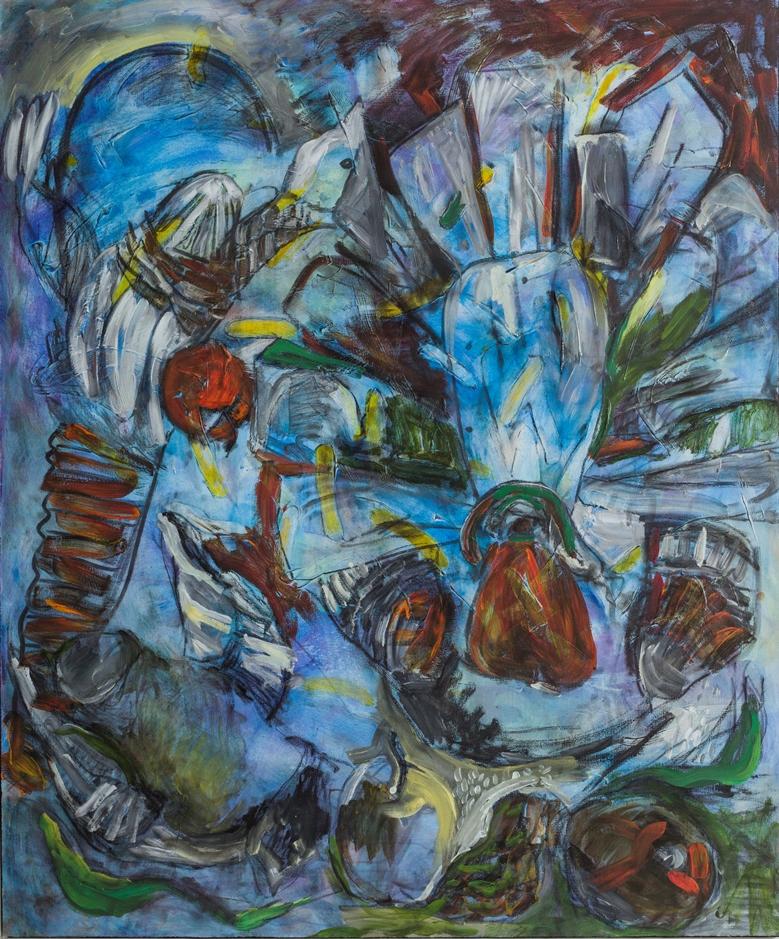Maria Panínguak` Kjærulff (1980) realizes her large paintings with broad expressive brush strokes. The painting Skovkalkuner (“Turkeys”), a work with charcoal, acrylic and oil colours from 2004, is part of Nuuk Art Museum’s collection.
In the broad expressive strokes one can almost follow the movements of the artist across the canvas. A turkey, two snow buntings and some apples emerge on the nuanced blue background – they do not appear in a clear way, rather as some pictorial presences. They are drawn with charcoal and filled out with thick brush strokes of white, red, yellow and green, like downy feathers whirling around.
Maria Panínguak` Kjærulff ran across some turkeys one Christmas in Canada (where she received her education). The cocks were strutting and parading their plumage as if in a show. This fascinated her.
Skovkalkuner was painted based on a little figure reminiscent of the turkeys seen in Canada. The snow buntings were painted from some small pictures too, but they are also a motive MPK has explored since childhood. The apples simply laid on the table, possibly the part of some Christmas decoration.
To MPK, painting is a form of investigation with a specific starting point from which the picture evolves: in Skovkalkuner such starting point was the turkey, the bird figures and the apples. She calls the painting process a time warp of energy, where each work becomes a fingerprint of herself.
MPK uses the birds and the apples to construct the image, to give the colours a shape and to direct the brush strokes. The essential part of the painting is therefore not the motive – the birds and the apples – but expression: the movement, the colours, and the brush strokes.
The painting can be viewed as a continuation of the tradition of still life, i.e. pictures of arranged objects. In Europe still-life painting has been known since Antiquity and has in certain periods been loaded with symbolic values: the objects could for example reference Christian faith, life and death. In the beginning of the 20th century arranged items became used by artists for exploring painting as such – the colours, space and motives; this was for instance the case with Cézanne and Cubism.
Maria Panínguak` Kjærulff is educated at Nova Scotia College of Art & Design in Canada and The Cooper Union in New York. Her first solo exhibition as a newly graduated artist was Tingerlaaq (“First Flight”), hold in 2006 at The National Museum of Greenland. Skovkalkuner was part of that exhibition and was bought on that occasion by Svend Junge, the founder of Nuuk Art Museum.
Nuuk Art Museum has several works of Maria Panínguak` Kjærulff in its collection, amongst which is a small painting from 2008 of the concrete apartment blocks in Nuuk. Although in a smaller format, in this picture we can still see playing with the broad brush strokes of MPK’s larger paintings and flirting with abstraction, as the subject almost melts and dissolves with each brush stroke.
“Behind the Art – Maria Paníanguak`Kjærulff” is written by Stine Lundberg Hansen. 2016.

